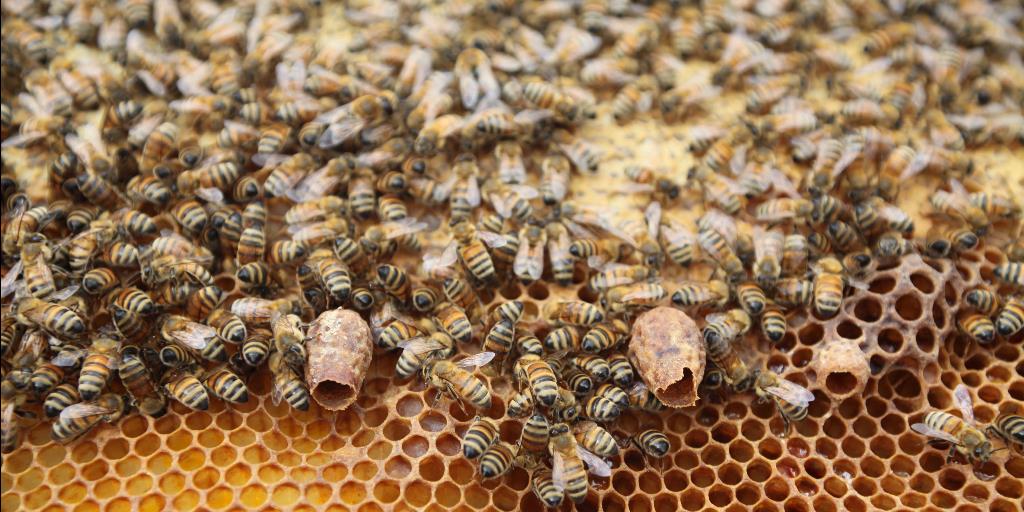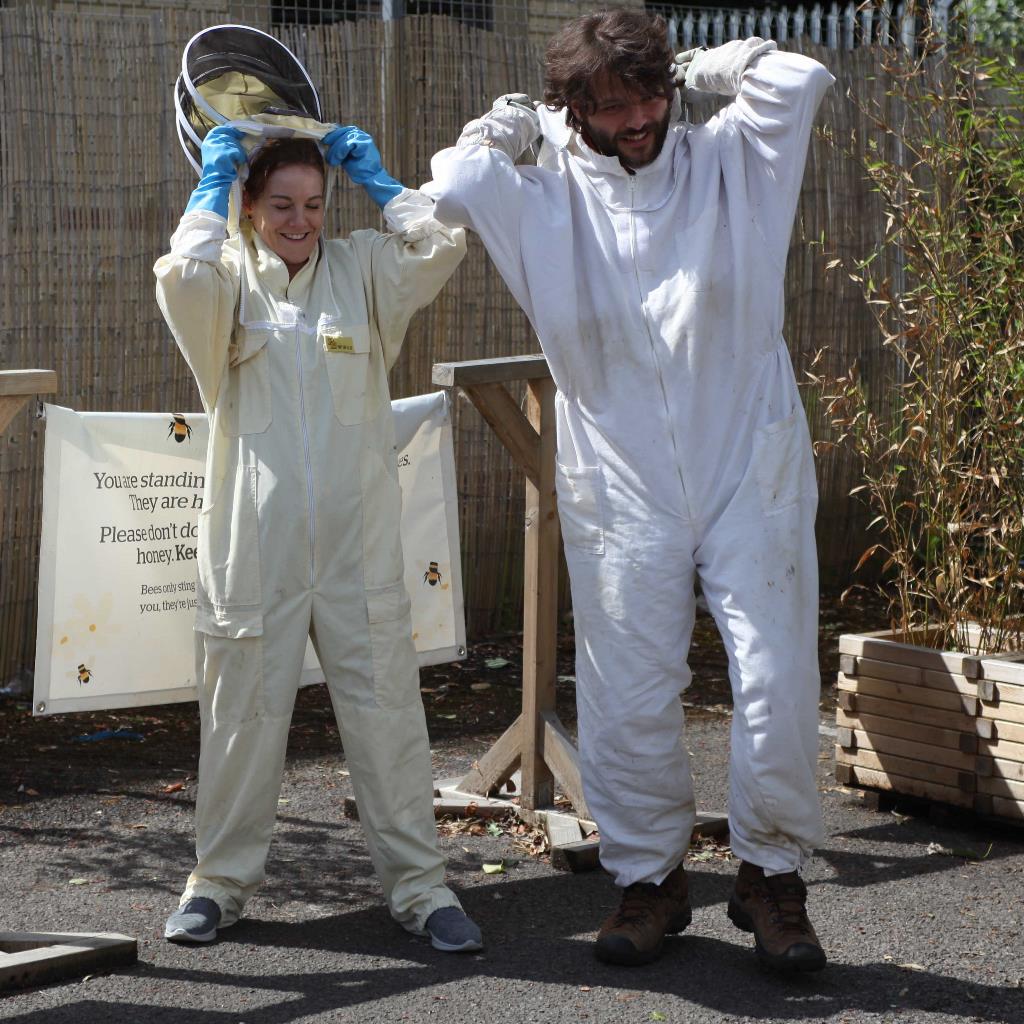After a pretty tricky Winter and a rather chilly Spring, our bees are finally thriving after the introduction of a new queen. Hoorah. The racks are teeming with honey. Our beekeeper, Tess, explains what’s been going down in bee town.
At home on the hive

“Upon inspecting all three colonies of bees, I found sealed queen cells in each hive. This means the previous queens have swarmed, leaving a brand new queen to replace her in each.
These brand new queens will need to hatch, mature and then leave the hive and be successfully mated by the drones. This process can take over a week, each queen will take around five days to mature, one day mating (hopefully - could take more than one mating flight!). The best scenario is eight days from hatching, but may take a bit longer.”
A few weeks later, Tess popped back to see our pollinators. Just in case you don’t know (I didn’t!) a super is a part of the hive that collects the honey.
“The first hive is looking great - a heavy super full of honey, and a healthy laying queen with lots of brood present - the colony is looking really good.
More good news at hive two, a fairly heavy super, not quite as heavy as the first hive. This is the colony we saw the queen emerging the week previous, so it was quite early to check really. As expected, no eggs as yet, but the queen has hatched. I'm assuming she's waiting to be mated, or was out on her mating flight at the time of inspection. I'm hopeful we'll see eggs on our next inspection!
Hive three is the weakest colony - no sign of a laying queen upon our last inspection, I'll see what's happening in here this week, if still no sign of a queen cell or brood, then I'll pop a frame of eggs from our 1st colony into this colony so the bees can raise themselves a new queen.”
We'll finish on a high, however. The best news is that Tess is hoping to remove the super of honey from the first colony very soon, so we’ll be able to taste our own Abel & Cole local honey. Watch this space!
While we have you here…
Our good friends, Friends of Earth – have a wonderful initiative. It’s called The Great British Bee count. You can download their free app and identify any bees you spot in your garden or along your walks. You can find it here at foe.co.uk/bee-count.



